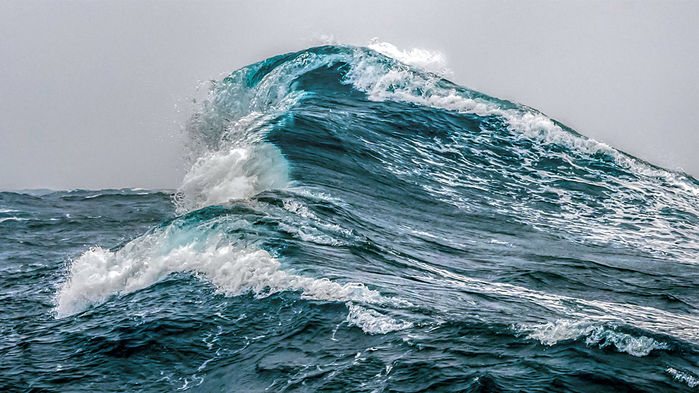The frigid Southern Ocean is well known for its brutal storms, which can sink ships and trigger coastal flooding on distant tropical islands. Now, a new study suggests the biggest waves there — already the world’s largest — are getting bigger, thanks to faster winds.

Peter Ruggiero, a geophysicist at Oregon State University in Corvallis who was not involved in the study, calls the increase “substantial,” and says he is particularly concerned by evidence that the tallest waves are gaining height at the fastest rate. “If [those waves hit] at high tide, it could be potentially catastrophic.”
For the past 33 years, global satellites have been collecting data on ocean waves —and the winds that drive them. By bouncing energy pulses off wave crests and measuring the time those pulses take to come back, instruments called altimeters aboard satellites can measure wave height — the taller the waves, the faster the signal returns. Other satellite instruments monitor changes in the reflectivity of the ocean surface, which is reduced by wind-generated ripples, to estimate the speed of ocean winds. But interpreting the data is difficult: Different satellites can give different estimates of wind speed, for instance.
To minimize those discrepancies, physical oceanographer Ian Young at the University of Melbourne in Australia, and mathematician Agustinus Ribal at Hasanuddin University in Makassar, Indonesia, compared information from different satellites and calibrated their data against an independent data set collected by a global network of buoys floating in the ocean.
Two trends
- Since 1985, average ocean wind speeds in most of the world have increased between 1 centimeter and 2 centimeters per second per year.
- This leads to increases in wave height in many places.
In the Southern Ocean, the trends are particularly strong. For instance, although average wind speeds there have increased by 2 centimeters per second each year, the speed of the top 10% fastest winds has increased by 5 centimeters per second per year. And although average wave heights there have increased by just 0.3 centimeters per year, the top 10% highest has grown by an average of 1 centimeter per year — a growth of 30 centimeters since 1985, they report today in Science.
Consequences for coastal communities
The trends could be bad news for coastal communities, which face serious risks from sea level rise and extreme storm events, Young says. If oceanic winds are stronger and waves are taller, storms could be far more damaging.
Young and Ribal have done a good job of cross-checking and double-checking data from the three different types of satellite instrument, says Ole Johan Aarnes at the University of Bergen in Norway. But, he adds, it might be “optimistic” to think that the data now contain no errors. Confirming the trends will likely require more work, he believes.
The new paper doesn’t say definitively why wave height and wind speed is changing, although Young suspects a link with climate change.
I don’t know about the link with climate change… But anyway, this is pretty scary!
Follow us on FACEBOOK and TWITTER. Share your thoughts in our DISCUSSION FORUMS. Donate through Paypal. Please and thank you
[Science article, Science Mag, SS, NOAA]












